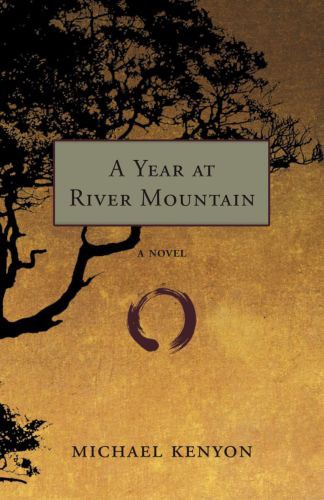“A Year at River Mountain” by Michael Kenyon
Published by Thistledown Press
Review by Shelley A. Leedahl
$19.95 ISBN 978-1-927068-04-5
Sometimes a book is a river, drawing us in. Such is A Year at River Mountain, by heralded BC writer Michael Kenyon. The enigmatic 68-year-old narrator of Kenyon’s introspective novel is, like most of us, trying to make sense of his life.
The former stage and screen actor’s removed himself from the manic “engine,” “blue-green anger” and “loneliness” of the western world to seek harmony and practice acupressure in a Chinese monastery. He writes: “I am at River Mountain because I have turned my back on my family, history, country.” His former world included an estranged wife and son and his professional roles; stark contrast to the valley, mountains, temples, plum trees, bamboo forest and fellow monks that surround him now.
It sounds pacific, but there are memories to wrestle with, and desire, and near the river beneath the monastery, nomadic tribes spar over boundaries and hungry children go missing.
The nameless monk’s past and present converge; he has traded “monks for players, master for director” as he goes about his daily routines of prayers, meditation, chores (ie: sweeping leaves from the temple path so the walk to and fro is soundless), meetings with the master, and practicing one-point acupressure (“the mapping of stars within the human body”) on other monks and villagers who require healing. The narrator says, “This calm collaboration. Being solitary in community. It is all I ever really wanted.” He considers what bowing meant in his former life, and what it means now: “Each time I am bowed to I bow, while offstage music plays.”
Kenyon possesses a writing style all his own. It’s dreamy, hypnotic.
Seemingly random observations, asides and ideas are like stones in a river; his narrator at once child and elder, leaping across them. The short, subtitled sections often read like prose poems. A single section might include a memory from his married life, the master’s tears, and the seals in Active Pass. Lush descriptions of the weather and landscape are teased out between passages concerning monastic life and the narrator’s relationships with his spiritual brothers (including the blind bellringer, Frank, who lived in Illinois and “is good at small engine repairs”); Zou Yiyuan, the wise, nomadic dwarf who becomes his new master; and Zou Yiyuan’s beautiful, shamanic sister. There’s also the expectation of the return of Imogen, the “blonde and waif-like” Canadian actor who’s both chimera and “a kind of guide, pointing out this and that, this icon, that text.”
Kenyon’s characters are never dull and dialogue is never wasted. Readers are involved via direct address and philosophic questioning, ie: “If the world is still does chaos rise as a kind of sensitivity?”
As the actor-turned-monk writes his life story, he asks: “How can we tell what doesn’t matter?” Kenyon shows us that it all matters, from “Sunlight on the trees” to “The pulse stored under the skin.”
One does not so much read this book as swim through it. I feel richer for the tolling bells and the passionate journey.
THIS BOOK IS AVAILABLE AT YOUR LOCAL BOOKSTORE OR FROM WWW.SKBOOKS.COM




